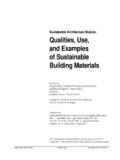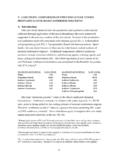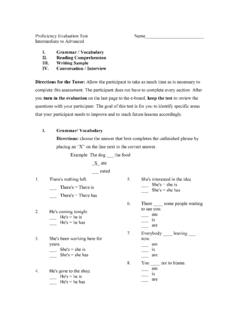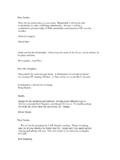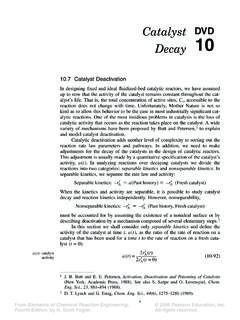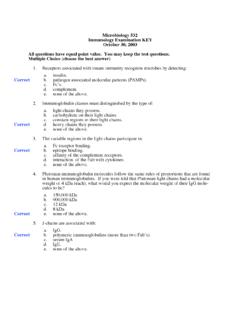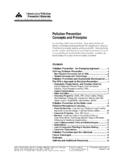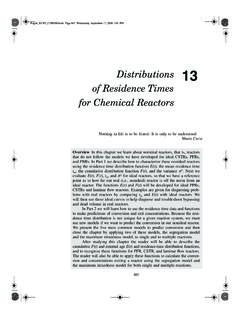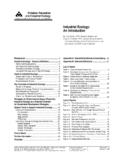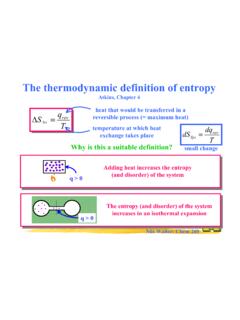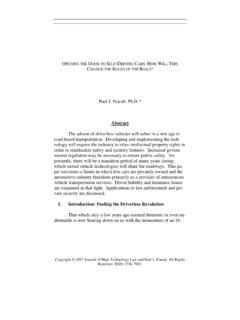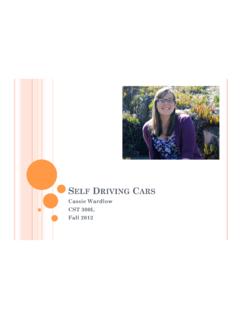Transcription of A PRELIMINARY ANALYSIS OF REAL-WORLD CRASHES …
1 UMTRI-2015-34 OCTOBER 2015 A PRELIMINARY ANALYSIS OF REAL-WORLD CRASHES INVOLVING self -DRIVING VEHICLES BRANDON SCHOETTLE MICHAEL SIVAK A PRELIMINARY ANALYSIS OF REAL-WORLD CRASHES INVOLVING self -DRIVING VEHICLES Brandon Schoettle Michael Sivak The University of Michigan Transportation Research Institute Ann Arbor, Michigan 48109-2150 Report No. UMTRI-2015-34 October 2015 i Technical Report Documentation Page 1. Report No. UMTRI-2015-34 2. Government Accession No. 3. Recipient s Catalog No. 4. Title and Subtitle A PRELIMINARY ANALYSIS of REAL-WORLD CRASHES Involving self -Driving Vehicles 5. Report Date October 2015 6. Performing Organization Code 383818 7.
2 Author(s) Brandon Schoettle and Michael Sivak 8. Performing Organization Report No. UMTRI-2015-34 9. Performing Organization Name and Address The University of Michigan Transportation Research Institute 2901 Baxter Road Ann Arbor, Michigan 48109-2150 10. Work Unit no. (TRAIS) 11. Contract or Grant No. 12. Sponsoring Agency Name and Address The University of Michigan Sustainable Worldwide Transportation 13. Type of Report and Period Covered 14. Sponsoring Agency Code 15. Supplementary Notes Information about Sustainable Worldwide Transportation is available at ~umtriswt. 16. Abstract This study performed a PRELIMINARY ANALYSIS of the cumulative on-road safety record of self -driving vehicles for three of the ten companies that are currently approved for such vehicle testing in California (Google, Delphi, and Audi).
3 The ANALYSIS compared the safety record of these vehicles with the safety record of all conventional vehicles in the for 2013 (adjusted for underreporting of CRASHES that do not involve a fatality). Two important caveats should be considered when interpreting the findings. First, the distance accumulated by self -driving vehicles is still relatively low (about million miles, compared with about 3 trillion annual miles in the by conventional vehicles). Second, self -driving vehicles were thus far driven only in limited (and generally less demanding) conditions ( , avoiding snowy areas). Therefore, their exposure has not yet been representative of the exposure for conventional vehicles.
4 With these caveats in mind, there were four main findings. First, the current best estimate is that self -driving vehicles have a higher crash rate per million miles traveled than conventional vehicles, and similar patterns were evident for injuries per million miles traveled and for injuries per crash. Second, the corresponding 95% confidence intervals overlap. Therefore, we currently cannot rule out, with a reasonable level of confidence, the possibility that the actual rates for self -driving vehicles are lower than for conventional vehicles. Third, self -driving vehicles were not at fault in any CRASHES they were involved in. Fourth, the overall severity of crash-related injuries involving self -driving vehicles has been lower than for conventional vehicles.
5 17. Key Words self -driving vehicles, autonomous vehicles, automated vehicles, crash ANALYSIS , FARS, GES, conventional vehicles 18. Distribution Statement Unlimited 19. Security Classification (of this report) None 20. Security Classification (of this page) None 21. No. of Pages 22 22. Price ii Contents Introduction ..1 Method ..3 Crash data ..3 self -driving vehicle fleets ..3 Crash database coverage ..4 Results ..6 Frequency of CRASHES ..6 Vehicle motion at the time of crash ..7 Crash type first harmful event ..8 Crash type manner of collision ..9 Crash severity ..10 Crash and injury rates ..11 Discussion ..12 Data limitations ..12 Small sample size for self -driving vehicle CRASHES .
6 12 Coverage and exposure ..12 Autonomous mode limitations ..13 Crash circumstances ..13 Crash outcomes ..14 Adjusted crash rates, injury rates, and confidence intervals ..14 Transitions from autonomous to manual control ..16 Other self -driving vehicle fleets ..17 Road safety for conventional vehicles in the versus California ..17 At-fault parties in CRASHES involving self -driving vehicles ..17 Conclusions ..18 References ..19 1 Introduction self -driving or autonomous vehicles are expected to deliver several key advantages over traditional, human-driven vehicles. The potential benefits include increased mobility and travel convenience, decreased congestion and reduced travel times, and improvements in safety for all traffic participants.
7 While the effects on mobility and congestion are still speculative until large numbers of self -driving vehicles take to the roads, the ability to analyze the REAL-WORLD safety aspects is starting to become possible. Though still in what many would consider their infancy, self -driving vehicles have collectively accrued over 1 million miles on public roads (though under somewhat limited circumstances and in specific environments or locations) (Audi, 2015b; Delphi, 2015; Google, 2015). (In this report, the terms self -driving vehicle and autonomous vehicle have the same meaning; autonomous mode refers to the fully automated operation of a self -driving vehicle.)
8 Several states have passed legislation allowing the operation and/or testing of self -driving vehicles on public roads, including California (NCSL, 2015). Currently, several manufacturers are operating and testing self -driving vehicles on public roads in California, which has specific regulations regarding the operation and testing of self -driving vehicles (referred to in the regulations as autonomous vehicles ; State of California, 2015a). These requirements include the duty to submit specific information, such as detailed company, vehicle fleet, operator, and training information to obtain a permit for testing (form OL 311), evidence of insurance specific to testing self -driving vehicles (form OL 317), and documentation of any CRASHES involving such vehicles in either autonomous or conventional mode ( , manual control) (form OL 316).
9 A current list of approved testers is shown in Table 1. The contents of the OL 316 crash reports (State of California, 2015b), combined with other public reporting of self -driving vehicle CRASHES (Google, 2015), formed the basis of the self -driving vehicle crash data used in this report. Due to the lack of public data regarding the driving experience of most self -driving vehicle test companies and their self -driving vehicle fleets, we will examine data for only three of the ten currently approved testing companies in this report. The general self -driving vehicle-crash trends 2 documented in this report will be compared with analogous conventional-vehicle crash statistics for the entire (NHTSA, 2015b).
10 Table 1 self -driving vehicle testing companies currently approved by the State of California (State of California, 2015a). Approved self -driving vehicle testing company Included in this ANALYSIS BMW Bosch Cruise Automation Delphi Automotive X Google X Honda Mercedes Benz Nissan Tesla Motors Volkswagen Group of America (includes Audi) X 3 Method Crash data self -driving vehicle fleets Table 2 lists the publicly disclosed on-road experience of the self -driving vehicles included in this ANALYSIS . The self -driving vehicle fleets currently (or recently) driving on public roadways in the are described, including broad summaries of each company s crash and associated injury experience. CRASHES occurring while a self -driving vehicle was being operated in conventional mode have been excluded from this ANALYSIS .
